| T O P I C R E V I E W |
| Xavier |
Posted - 01/02/2017 : 12:05:52
I edit this topic every time I find new informations about this really big mess.
and I write new annotations about Thai species.
I received today several specimens with this label: Saraburi, XI. 1988, Thailand.
All species of my parcel are only known from...Borneo.
So, if you have specimen(s) with those data, they are wrong.
2 examples here and here  |
| 15 L A T E S T R E P L I E S (Newest First) |
| Francesco |
Posted - 07/02/2019 : 19:04:10
quote:
Originally posted by Xavier
Is Serratobicon scutatus (Holzschuh, 1992) from Bangkok (!!!) still valid ?
This species (from Sumatra) is still valid.
The Thai locality is in all likelihood false. |
| Xavier |
Posted - 07/02/2019 : 18:32:58
Is Serratobicon scutatus (Holzschuh, 1992) from Bangkok (!!!) still valid ? |
| Xavier |
Posted - 07/02/2019 : 18:00:02
quote:
Originally posted by dryobius
It was originally Centrotoclytus nigriceps Aur. 1925
Ok, thanks. |
| dryobius |
Posted - 07/02/2019 : 17:54:22
It was originally Centrotoclytus nigriceps Aur. 1925 |
| Xavier |
Posted - 07/02/2019 : 17:33:51
Heuh, what is Serratobicon nigriceps ? |
| dryobius |
Posted - 07/02/2019 : 17:33:16
What journal was this in? Does anyone have a pdf yet? |
| Francesco |
Posted - 07/02/2019 : 17:13:03
quote:
Originally posted by Francesco
Voilŕ: any one: Serratobicon scutatus
Serratobicon scutatus scutatus: widespread in Thailand (Saraburi) and Sumatra! 
No problem for the author for this strange distribution 
Serratobicon scutatus sabahensis: Borneo.
Differences (according to the author):
- the red colour does not reach the elytral half (but colour is variable!)
- the almost regularly rounded pronotal disk with a bit stronger and more evident punctures. Author's remark: the two paratypes show different pronotal proportions (!)
Chapeau!
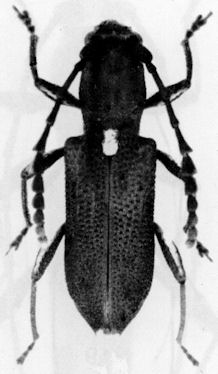 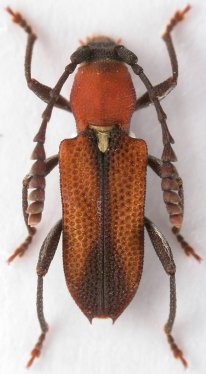 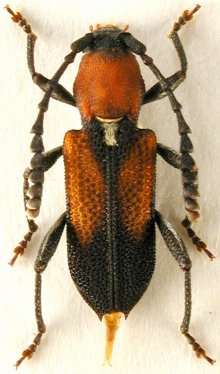
Serratobicon scutatus scutatus (b/n) and sabahensis, females (colour)
Holzschuh (2019) has just synonymised Serratobicon scutatus sabahensis with Serratobicon nigriceps (Aurivillius, 1925) |
| Francesco |
Posted - 21/06/2018 : 08:24:44
Prionoceridae are also interested in this problem: here.
Thank you Michael Geiser for information. 
|
| Xavier |
Posted - 12/03/2018 : 21:34:48
I wrote the article tonight, it should be published soon. |
| Xavier |
Posted - 10/03/2018 : 12:29:12
The problem is larger than Cerambycid-group.
In those 3 papers, available on internet, you will find other fakes data by searching (crtl + f ) "Saraburi" or "Steinke". Often, the authors note the inexplicable distribution of a species. Now they have their answer to this mystery.
- GIUSEPPE PLATIA, 2008. Contribution to the knowledge of the species of the genera Agonischius Candčze and Vuilletus Fleutiaux (except those from Japan and Taiwan) (Coleoptera, Elateridae, Elaterini) Boletín Sociedad Entomológica Aragonesa, n1 42
- MICHAEL GEISER, 2010. Studies on Prionoceridae (Coleoptera: Cleroidea). II. A revision of the genus Prionocerus Perty, 1831. Zootaxa 2328: 1–48
- J. HÁJEK, 2009. Revision of the genus Eulichas Jacobson, 1913 (Coleoptera: Eulichadidae) II. E. dudgeoni species group. Zootaxa 2192: 1–44
...but the list should be longer  . .
|
| Xavier |
Posted - 20/02/2017 : 12:52:13
Ok, thanks a lot. |
| Francesco |
Posted - 20/02/2017 : 12:49:36
C. asperatus differs from the new species especially in the elytra shortly setaceous pubescent externally, much coarsely sculptured, brown at apex; the apex of the pronotum not covered with white pubescent, and the straight tibiae.
The elytral apex looks brown in this species as well, however... |
| Xavier |
Posted - 20/02/2017 : 11:17:52
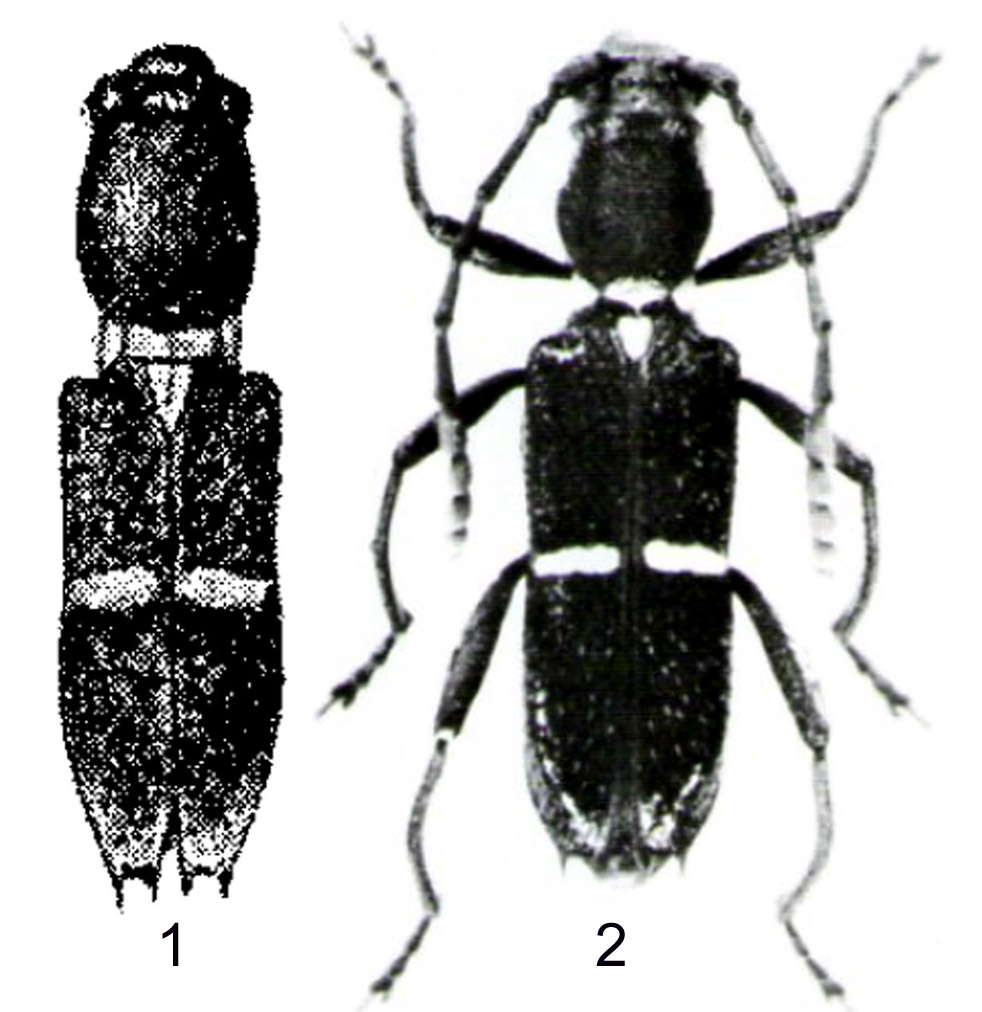
170.55 KB
Photo1.Centrotoclytus asperatus Aurivillius, 1925 is from Borneo.
Photo2.Centrotoclytus curvipes Holzschuh, 1992 is from Thailand, Ranong, Jan.-Mar, 1989
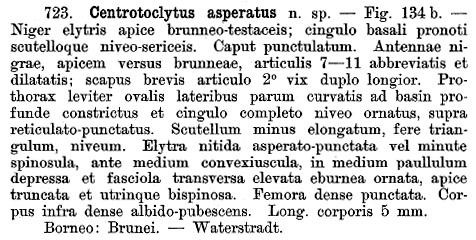
86.9 KB
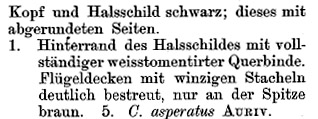
42.09 KB
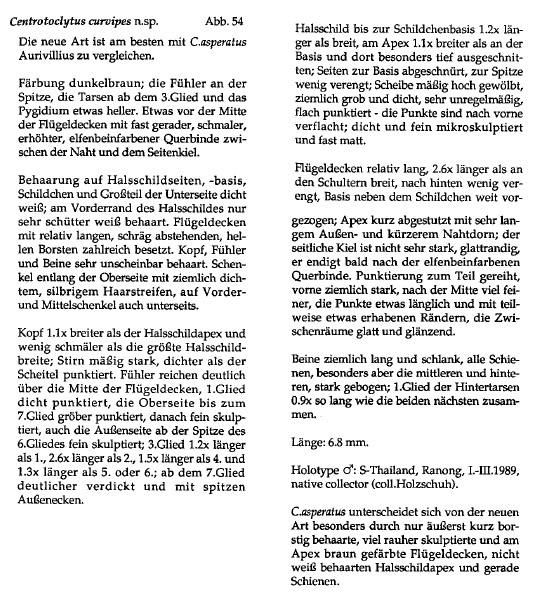
178.56 KB
I do not read German langage (sorry). Who can help me to understand the differencial diagnose proposed by the second author ? Thanks. |
| Xavier |
Posted - 04/02/2017 : 17:33:43
and here |
| Xavier |
Posted - 04/02/2017 : 16:46:03
to follow this incredible story , have a look here
   |


